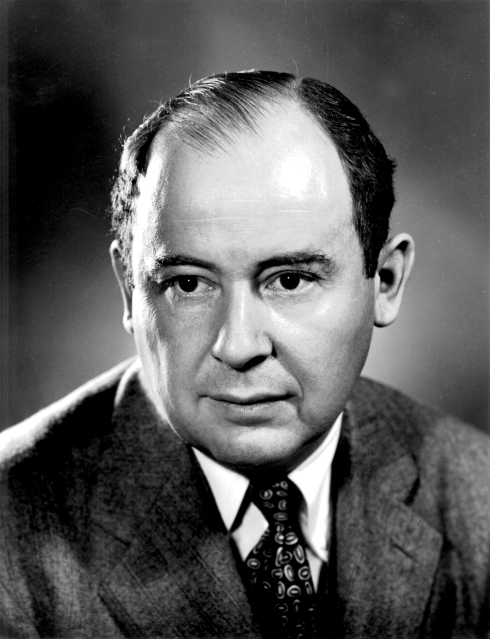*THIS POST IS BY STIRLING NEWBERRY*

John Von Neumann
A great deal has been written about the Theory of Games, but unfortunately, most of it is wrong: it doesn’t accurately represent what the theory means for economic and biological behavior. Some who write about game theory have taken a course in game theory and are honestly trying and are honestly trying to explain the idea that everything can be explained by game theory. They just don’t understand it well.
But some are more pernicious in their intent: they know that Game Theory does not actually make the point they want to make, but they know very few people will be able to catch the rather subtle intricacies on which their misleading theory rests.
There are also blunders that great human will make because of a blind spot in their thinking: Linus Pauling is one behind step behind us, laughing as he does so. (He made some errors in the structure of DNA, which amused everyone, especially when Watson and Crick’s very soon afterward got the structure right, with a great deal of help from Franklin’s x-ray pictures).
Game theory started with John von Neumann’s proof that mixed strategy equilibria could be to collapse down to at least one point. He originally did this using using a topographical proof know as the Brouwer fixed-point theorem. Eventually Nash expanded the theory include any number of players and describe what is now known as a Nash equilibrium.
This much you can learn with a few Wikipedia searches.
If one starts reading, one is soon introduced to the “Prisoner’s Dilemma”, which was one of the early games because of its application to real-world problems. In the simplest case, there are 2 players and they are caught, but the prosecutors do not have enough evidence to convict them with a confession. So the prisoners are separated and each of the same deal: if you rat on the other person, he will take the blame. What the prosecutors are hoping for is that each one will rat on the other, and they can get both.
So there is a two-person game, but which is set up by a 3rd person to get the information that they want.
But if one thinks about it, there is a fourth looking at the running of both games, and they will find out that loosely connected criminals will do as they expect: the two finger the other person. But in tightly knit communities with a deep commitment to crime, the 2 players will shut up, serve the much lesser sentence, and go free. This is because one of the goals of the prisoner’s dilemma does not apply: the 2 criminals had already said, and were committed to, not talking if they are captured.
So a 2 player game, becomes a 3 player game (prosecutors), becomes a 4 player game (politicians) becomes a 5 player game (criminal underworld world). This is the part of being a real game theorist: imagining a game, and asked whether a new dimension could be introduced by taking a set of people who are betting on the game itself.
It also points out a very necessary thing about game theory: it often does not produce the optimal set of outputs, but the pessimal series, the least worst position that a player can get. This is why, in game theory, one usually solves backward – take the last step, and then the next to last step, and so on.
One of the other core concepts of game theory is also on display here: to find out if one player has a dominant strategy, that is one play which will lead to the best outcomes whatever choice his opponent makes. The dominant strategy does not produce the best outcome, merely the best outcome given that the other player will accept. That is why the word “pessimalization” (not pessimization) is used certain groups of people, to emphasize that it is the best possible worst outcome.
Going forward, for future posts, I will post on real topics, and I will imagine that the people involved are expert players, or they can get hold of some. These topics will include Brexit, Climate Change, Trump and other problems with rational outcomes, though a great number of people do not want the rational outcome to happen. This too has a game theory solution: change the rules.
